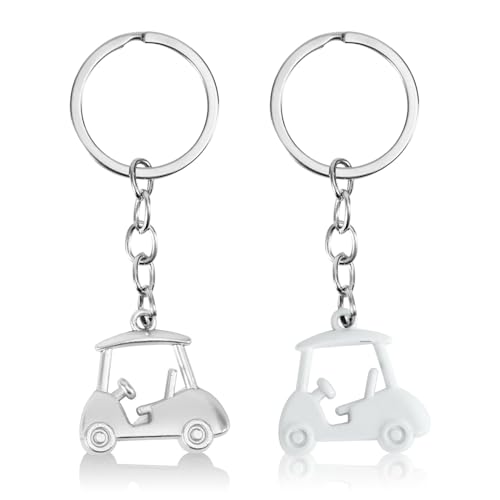Ever wondered what’s inside those little dimpled spheres you’re whacking down the fairway? Making a golf ball is an intricate process that blends art and science to create a product capable of flying long distances with precision.

You might think it’s just a matter of molding some plastic, but there’s a lot more to it. From the core to the cover, each layer plays a crucial role in performance. Let’s tee off into the fascinating world of golf ball manufacturing and discover what makes your golf ball a marvel of engineering.
Core
Diving deeper into the heart of a golf ball, you’ll find the core, which is the engine of the ball, driving your shots to their maximum distance. The core’s composition is crucial – typically made from synthetic rubber, which has been heavily researched and developed to deliver a balance between high energy return and soft feel.
To tailor your game, it’s essential to comprehend the core’s properties. A softer core will usually compress more upon impact, translating to better control and a gentler feel, especially useful in your short game where precision is key. On the other hand, a firmer core equates to more resilience and, therefore, greater distance off the tee. This is ideal for you if your swing speed is on the higher side.
Here are some core characteristics and how they might affect your game:
- Compression: A lower compression rating often provides a softer feel, better for players with lower swing speeds.
- Resilience: Higher resilience cores can improve the energy transfer for increased distance.
As you refine your skills and learn more about your swing, you might lean towards a golf ball with a specific core composition. Some advanced golfers prefer a dual-core design, which combines two distinctly different layers around the center. The goal here is to exploit the advantages of both soft and firm cores. The innermost layer is usually softer, providing control and feel, while the outer layer is firmer to maximize distance.
It’s worth experimenting with different types of golf balls during practice rounds to find the perfect match for your game. Remember, even the slightest adjustment to the core can have a significant impact on ball flight and overall performance. Don’t be afraid to switch things up until you find a ball that feels right and helps in lowering those scores.
Mantle
The mantle, or the intermediate layer of a golf ball, sits between the core and the cover. It plays a critical role in affecting how the ball reacts upon impact. As you continue to refine your game, understanding the mantle’s importance can help you choose a ball that complements your style of play.
Multi-layered golf balls often feature a mantle made of ionomer or a similar material. This layer directly influences the spin, compression, and overall performance of the ball. A mantle designed with high flexural strength adds increased spin for better control on approach shots, which can be vital in managing your game closer to the green.
For aggressive swingers, a mantle can reduce spin on long drives, helping you keep the ball in play off the tee. Some golf balls have been engineered with a gradient stiffness mantle. With this design, the outer region is stiffer, leading to a gradual transition in hardness across the intermediate layer. It’s a smart choice if you’re looking for a blend of control and distance.
Golf balls with a softer mantle may compress more on impact, offering a smoother feel and can be more forgiving with off-center hits. It’s worth experimenting with balls that have different mantle characteristics during practice rounds. Pay attention to how each design affects both your long game and short game performance.
Remember, the materials used and the design of the mantle layer vary across manufacturers and ball models. Each brings a unique aspect to ball performance. Brands continuously innovate and update their mantle technologies—so it’s a good idea to stay informed about the latest developments.
Choosing the right golf ball requires consideration of all its components. After finding the right core, look closely at the mantle. It could be the difference-maker in hitting your next shot just that much closer to the pin. As you craft your shot-making abilities, the nuanced impacts of the mantle should not be overlooked—it’s yet another tool in your arsenal to help lower your scores.
Cover
Now that you’ve got a handle on the mantle and how it influences your game, let’s unpack the outer shell of the golf ball: the cover. This is where feel and control come into play.
Traditionally, golf ball covers were made of balata, a soft material that seasoned golfers like you might remember for providing excellent spin and feel. However, they weren’t durable. Enter the modern era of golf balls, where Urethane and Surlyn covers have taken the stage. Urethane covers are typically found on higher-end, tour-level balls, offering a soft feel and great control, making them a favorite among low handicappers and pros.
Surlyn covers, on the other hand, boast durability and are ideal for golfers looking to improve their game without worrying about scuffs and cuts after every drive. They provide a different feel and may not offer as much spin control as urethane, but their resilience makes them a practical choice for regular play.
Consider this when you’re facing an approach shot to a tucked pin: a ball with a urethane cover gives you the spin needed to stop the ball on a dime. That precision can make the difference between a birdie opportunity and a challenging two-putt. On the flip side, during those long drives, a Surlyn cover can help reduce spin, resulting in less slice or hook on your shot.
The cover also affects compression, with softer covers typically leading to a lower compression ball. This is key if you have a moderate swing speed and are looking for a ball that will have a good energy transfer upon impact.
By understanding these nuances, you can make an informed decision that matches your skill level and the specific conditions of your typical course. Armed with the right golf ball, your chances of shooting lower scores are in the palm of your hands.
Remember, it’s not just about the swing—it’s the right equipment that complements your game. The next time you’re in the pro shop or browsing online, pay close attention to the cover options available. They might just unlock the next level in your golf prowess.

Dimples
You’ve probably noticed those tiny, round indents dotting the surface of every golf ball you’ve ever teed up. Those are dimples, and they’re not just for show; they play a pivotal role in how your ball behaves once it’s soaring through the air.
Dimples are a masterpiece of aerodynamic design, crafted to reduce air resistance and influence lift. It’s the dimples that allow a golf ball to travel further than a smooth-surfaced ball could ever dream of. Here’s the science behind it: as a ball spins and moves through the air, the dimples create a thin layer of air that clings to the surface. This air moves with the ball, creating a turbulent flow that reduces the wake (the area of low pressure behind the ball) and, in turn, decreases drag.
But it’s not just about the dimples themselves; it’s their size, shape, and pattern that are key. There’s a sweet spot that golf ball manufacturers aim for—a balance that optimizes both distance and trajectory. Too shallow, and the ball won’t have the necessary lift. Too deep, and it could cause excessive drag.
Here’s a breakdown of typical dimple designs:
- Circular Dimples: The most common type, these contribute to a stable flight.
- Hexagonal or Pentagonal Dimples: Some modern balls feature these shapes for a more refined aerodynamic performance.
You might not have given much thought to how they’re arranged, but the dimple pattern is crucial, too. A symmetrical pattern helps balance the ball’s aerodynamics, ensuring that it flies straight when hit correctly.

Crafting the ideal golf ball takes extensive testing and development. As you look to improve your game, consider the dimple design when you’re selecting your next set of golf balls. It could make a noticeable difference in how you control the ball and, ultimately, on your scoring. Remember, the best players don’t just understand their swings; they understand every piece of equipment in their bags.
Conclusion
Crafting the perfect golf ball is an art that balances technology and precision. With the right dimple design, you’ve seen how a golf ball can achieve greater distances and a more accurate flight path. Remember, the next time you’re selecting a ball, those tiny dimples are more than just a design; they’re the secret to your swing’s success. So go ahead, choose wisely, and let those dimples guide your game to the next level. Happy golfing!










